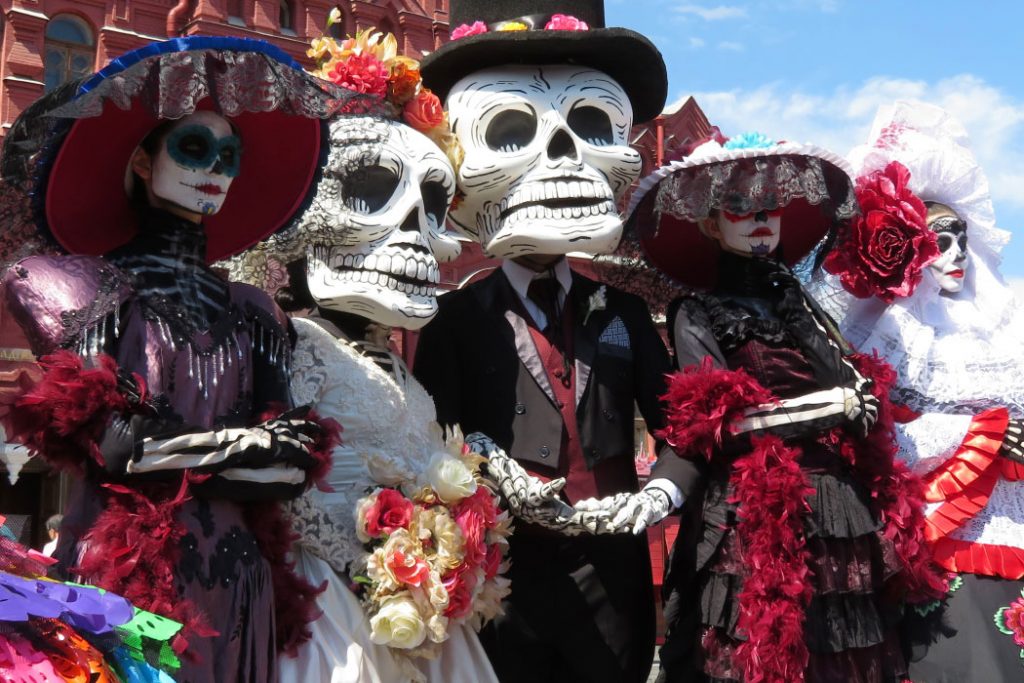Source: Aljazeera
What exactly is the Day of the Dead?
The most significant fiesta in Mexico is held every year when people gather in cemeteries to remember their deceased family members. Tradition holds that when the heavens open, the souls of the deceased return to the earth.

- What is the day of the dead?
It goes beyond a single day. Families welcome back the spirits of their deceased relatives for a brief reunion during this two-day celebration, which is customarily held on November 1 and 2. Food, beverages, and even toys are placed at altars to entice the visiting souls. It is celebrated rather than observed as a solemn occasion because it is thought that the living and the dead can communicate during this time.
2. What inspired the celebration?
The celebration is thought to have originated from Indigenous communities thousands of years ago as a pre-Hispanic custom.
Death was temporary in the eyes of the Aztecs, and the afterlife was not final. Some analysts assert that these customs were incorporated into the Catholic calendar following the arrival of the Spaniards in the 16th century and are now observed in conjunction with All Souls’ Day
It is celebrated rather than observed as a solemn occasion because it is thought that the living and the dead can communicate during this time.
“This is a festive occasion. When our relatives passed away, there was sadness, but on this day, we need to let them know that we are happy to remember them, according to Yoroslay Delgado, speaking to Al Jazeera.

How is the holiday observed?
Many families in Mexico will spend November 1 honoring the kids, also known as “angelitos” (little angels), by placing toys and balloons on their graves. They will observe All Souls Day, a holiday honoring adults who have passed away, on November 2.
To honor their loved ones, families erect “ofrendas” (altars) on their graves. Additionally, they use marigolds known as cempasuchil flowers, which are thought to help guide the spirits of the deceased back to their homes in the family cemetery. Others create “Calaveras” (skulls), or short satirical poems, which are epitaphs for friends and contain humorous anecdotes as well as descriptions of their interesting habits.
The day’s dominant symbol is the skull, which stands for life’s cyclicity. Both the living and the dead can receive gifts of sugar or chocolate skulls. Pan de Muerto, a bread that can be made in a variety of shapes and is frequently decorated with white frosting to resemble twisted bones, is another well-liked item.
How are the altars (ofrendas) constructed?
The altars are an important part of the celebration because they guide the souls back home while also honoring and pleasing the departed.
Visitors’ photos are usually displayed on the altars. They can have two levels to represent heaven and earth, a third to represent purgatory or seven levels to represent the steps to heaven.
The four elements are represented on the altars. Water is intended to quench the thirst of those who visit; fire is represented by candles whose light guides the deceased’s spirit; the earth is present in food and other special items for the dead, and the air is represented by colorful paper cut into designs.
Salt is used on some altars.
On October 28, 2022, during the Day of the Dead celebrations in Mérida, Mexico, individuals with their faces painted as skulls take part in the customary Mayan commemoration of the dead Hanal Pixan, also known as Paseo de las Animas (“Parade of the Souls”).
The final day of the Allhallowtide triduum, All Souls Day, which is observed by Western Christians, falls on the same day as the “Day of the Dead.” Churches and priests hold mass on All Saints’ Day to pray for the departed who are thought to be in purgatory. In the eleventh century, Odilo, a Benedictine abbot of Cluny, standardized the commemoration of All Souls’ Day. It has been celebrated on November 2 ever since.

